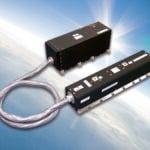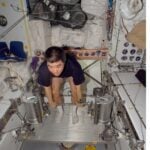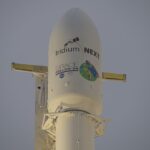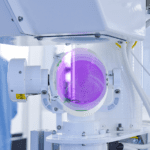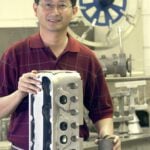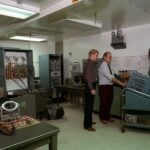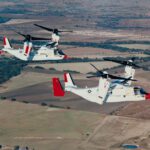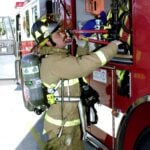Space Technology Hall of Fame Inductees
The Space Technology Hall of Fame® comprises many extraordinary innovations — all derived from or significantly improved by space research or exploration. To nominate a technology, please visit our Nominate a Technology page to learn more about the Space Technology Hall of Fame® selection criteria.
Search Filters:
First developed in the 1930s, Traveling-Wave Tube Amplifiers (TWTAs) were designed to amplify radio frequency signals. It was in the early 1960s that NASA and L3 teamed up to evolve the technology so it would meet the transmission needs of space missions. The first TWTA flew on a satellite in 1962, and they have been…
Read MoreLong stays in space, such as on the ISS, take a toll on the human body, as muscles atrophy and bones weaken and lose minerals. Astronauts have long used exercise equipment to help mitigate the effects of microgravity on their bodies. But as NASA astronaut Shannon Lucid found in 1996 after a six-month stay on…
Read MoreCommunication devices, such as smart phones and radios, rely on electromagnetic spectrum, particularly the “S-band” portion to transmit data. Given the growing use of these technologies, the S-band has become congested with many users. This is a challenge for space missions especially given the huge amounts of data that must be rapidly delivered to Earth…
Read MoreReliable and affordable Laser Communication technology connecting the world There is an increasing worldwide demand for internet access to connect all aspects of our modern society. Miniaturized Laser Terminals for aircraft, UAVs and satellites can provide backbone connectivity for such access in a reliable and affordable way. Digital communications technology reaches every aspect of our…
Read MoreLight weight alloy technology with proven durability, longevity and reduced environmental impact In 1993, the Partnership for Next-Generation Vehicles (PNGV) brought together federal laboratories, universities, automakers and other industry partners, with the common goal of increasing automotive fuel efficiency and reducing environmental impact. Towards this end, NASA Marshall Space Flight Center began work on its…
Read MoreFor more than a decade, NASA’s laboratories conducted research on the use of water hyacinths for treating and recycling wastewater for application in space colonies and long duration manned space flights of the future. Researchers discovered that water hyacinths thrive on sewage by absorbing and digesting nutrients and minerals from wastewater. Thus a means of…
Read MoreA family of biomedical implantable devices have been developed over the past decade which are based on a wide array of space technologies, including battery advances, miniaturized circuitry, digital telemetry, and electronic sensing systems. The initial device was the rechargeable cardiac pacemaker, but many more continue to be developed that significantly aid health maintenance. A…
Read MoreMillions of alternating current motors are in use throughout industry and in consumer products. Much of the power they consume, however, is wasted because electricity is fed to homes and factories at a fixed voltage level which is not required constantly by motor-driven devices and equipment, especially when in an idling mode. The cumulative power…
Read MoreIn the early years of the space program, it took thousands of man-hours and months to analyze and solve structural problems in the design of aircraft and space vehicles using conventional mathematical methods. Today designers and engineers are able to analyze and solve thousands of structural problems in a matter of hours. An extremely complex…
Read MoreIn the early 1970s, the Johnson Space Center (JSC) undertook to adapt and apply technology developed for portable life support used by Apollo astronauts on the moon in a significant effort to improve firefighter breathing systems. This effort was in response to a need expressed by many of the nation’s fire chiefs. What emerged four…
Read More
